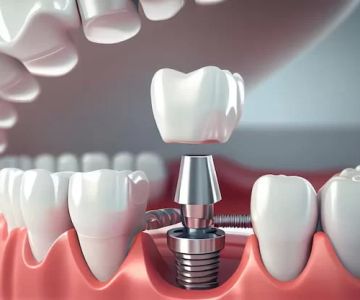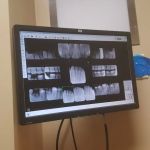1. Understanding Dental Insurance and Its Benefits
Dental insurance is a valuable resource that can help significantly reduce the cost of dental care. With dental procedures often being expensive, having coverage can help you manage the financial burden of both routine checkups and more complex treatments. Dental insurance typically covers preventive care such as cleanings and exams, and may also provide partial coverage for treatments like fillings, crowns, and even orthodontics, depending on the plan. Understanding how dental insurance works can help you make informed decisions and maximize your savings when it comes to maintaining your oral health.
2. How Dental Insurance Helps Lower Out-of-Pocket Costs
One of the most significant benefits of dental insurance is its ability to lower your out-of-pocket expenses. Without insurance, the cost of a basic cleaning can range from $75 to $200, and more complex procedures like root canals or crowns can cost hundreds to thousands of dollars. With dental insurance, many of these procedures are covered under the plan, reducing the amount you must pay upfront. Most dental insurance plans operate on a tiered coverage system, where preventive services are fully covered, while more advanced treatments are partially covered, reducing the out-of-pocket expenses for major procedures. This helps alleviate the financial strain of necessary treatments and keeps your dental care affordable.
3. Types of Dental Insurance Plans to Consider
There are several types of dental insurance plans available, each with its own set of benefits and coverage. The most common types are:
- Dental Health Maintenance Organization (DHMO): DHMO plans often have lower premiums but require you to choose a primary care dentist and get referrals for specialist care. They tend to have lower out-of-pocket costs for preventive care.
- Preferred Provider Organization (PPO): PPO plans offer more flexibility in choosing dentists, but they tend to have higher premiums and out-of-pocket costs. They cover a broader range of services, including major dental work like implants and crowns.
- Indemnity Plans: These plans give you the most freedom to choose any dentist, but you will need to pay upfront and submit claims for reimbursement. They typically cover a percentage of the dental treatment costs.
Choosing the right plan depends on your dental needs, preferences, and budget. By comparing the benefits and costs of each option, you can find a plan that best meets your needs and helps keep dental expenses manageable.
4. Real-Life Examples of How Dental Insurance Saves Money
To illustrate how dental insurance can lower out-of-pocket costs, consider the following real-life example. Sarah, a 32-year-old woman, needs a root canal and crown. Without insurance, the total cost for these procedures could be upwards of $1,500. However, with her PPO dental plan, Sarah only needs to pay 20% of the cost after her deductible, bringing her out-of-pocket expenses down to about $300. This significant savings shows how dental insurance can make expensive treatments more affordable, allowing patients to get the care they need without worrying about the full financial burden.
5. Finding Affordable Dental Insurance That Works for You
When searching for affordable dental insurance, it’s important to balance cost with coverage. Look for plans that provide adequate coverage for both preventive and major dental procedures. Sites like Dentistry Toothtruth offer valuable resources to help you compare different dental plans and find the one that fits your needs and budget. Consider your dental history and future needs—if you anticipate needing more extensive dental work, investing in a comprehensive plan may be worth it. Make sure to review the details of each plan to understand what’s covered, the premiums, co-pays, and annual limits.







 Freeport Kids Dental & Orthodontics4.0 (235 review)
Freeport Kids Dental & Orthodontics4.0 (235 review) Palo Alto Orthodontics5.0 (249 review)
Palo Alto Orthodontics5.0 (249 review) Michael Tabbah, D.M.D.5.0 (2 review)
Michael Tabbah, D.M.D.5.0 (2 review) Innovate Dental4.0 (142 review)
Innovate Dental4.0 (142 review) Judah Garfinkle, D.M.D., M.S.3.0 (3 review)
Judah Garfinkle, D.M.D., M.S.3.0 (3 review) West Coast Dental of South Gate3.0 (495 review)
West Coast Dental of South Gate3.0 (495 review) The Importance of Oral Health Education During Pregnancy for a Healthy Pregnancy
The Importance of Oral Health Education During Pregnancy for a Healthy Pregnancy Best Tips for Brushing Your Teeth Properly for Healthy Gums: Essential Techniques for Oral Health
Best Tips for Brushing Your Teeth Properly for Healthy Gums: Essential Techniques for Oral Health Why Skipping Dental Checkups Can Lead to Bigger Oral Health Problems
Why Skipping Dental Checkups Can Lead to Bigger Oral Health Problems Advantages of Porcelain Dental Restorations
Advantages of Porcelain Dental Restorations How Can Diabetes Cause Tooth and Gum Problems? Preventing and Managing Oral Health Issues
How Can Diabetes Cause Tooth and Gum Problems? Preventing and Managing Oral Health Issues Healthy Habits for Promoting Good Oral Health and Hygiene: Tips for a Healthy Smile
Healthy Habits for Promoting Good Oral Health and Hygiene: Tips for a Healthy Smile